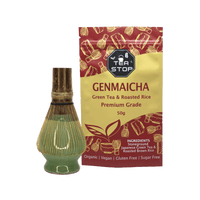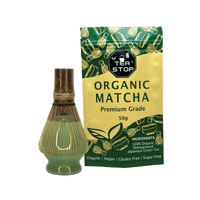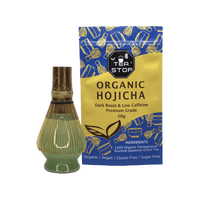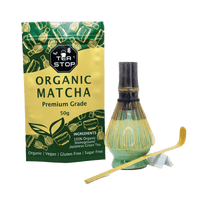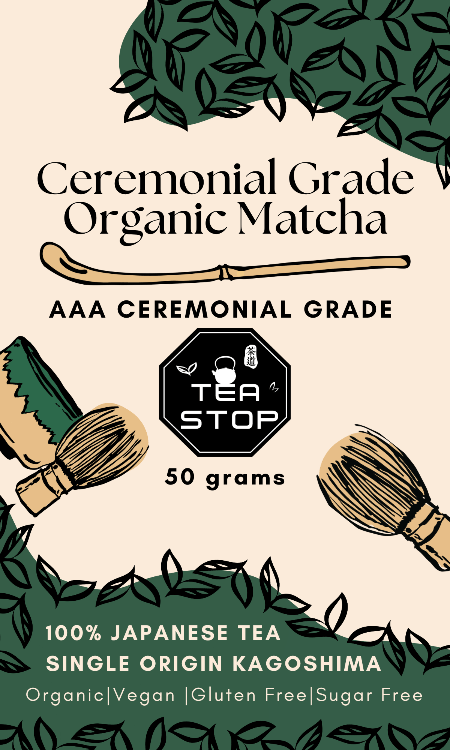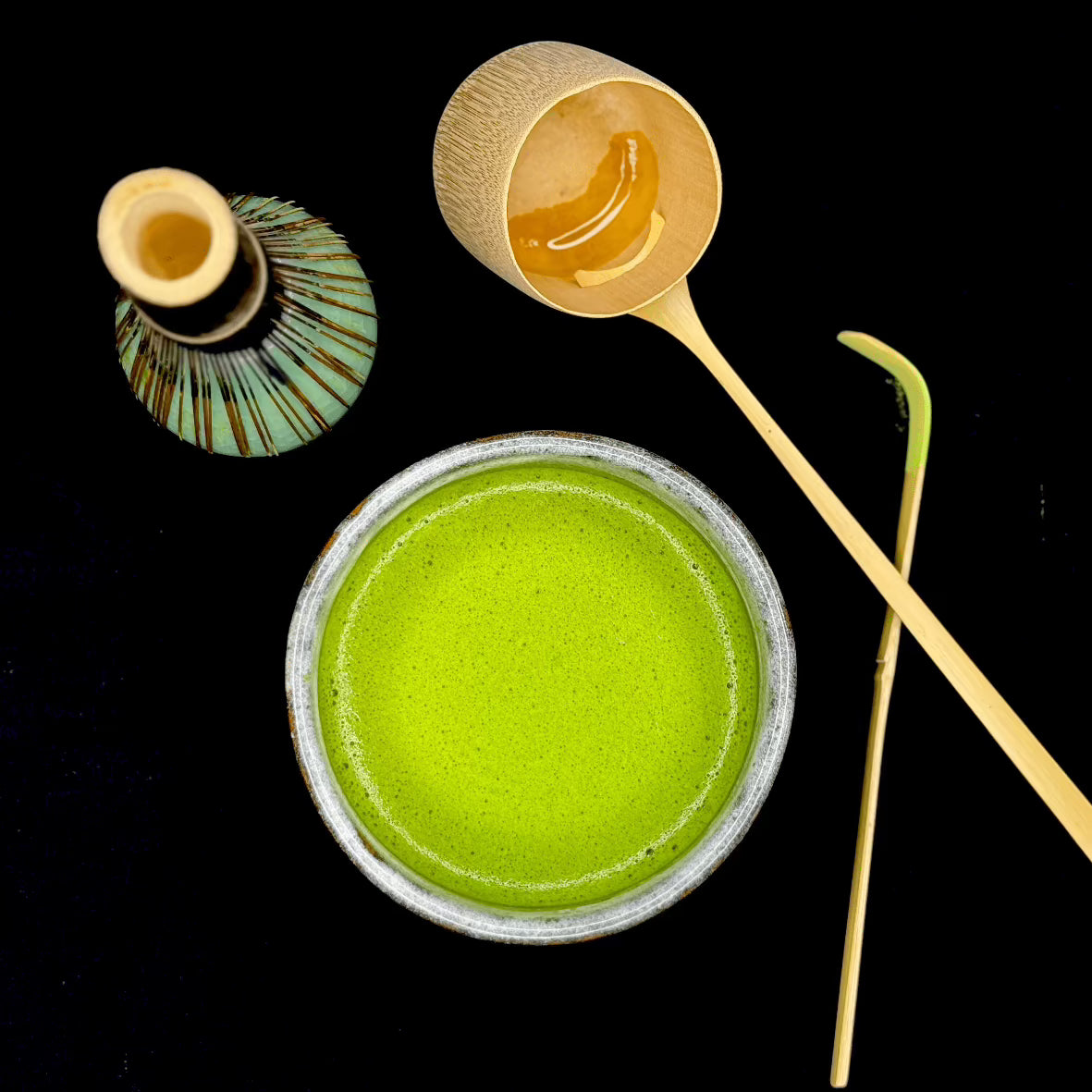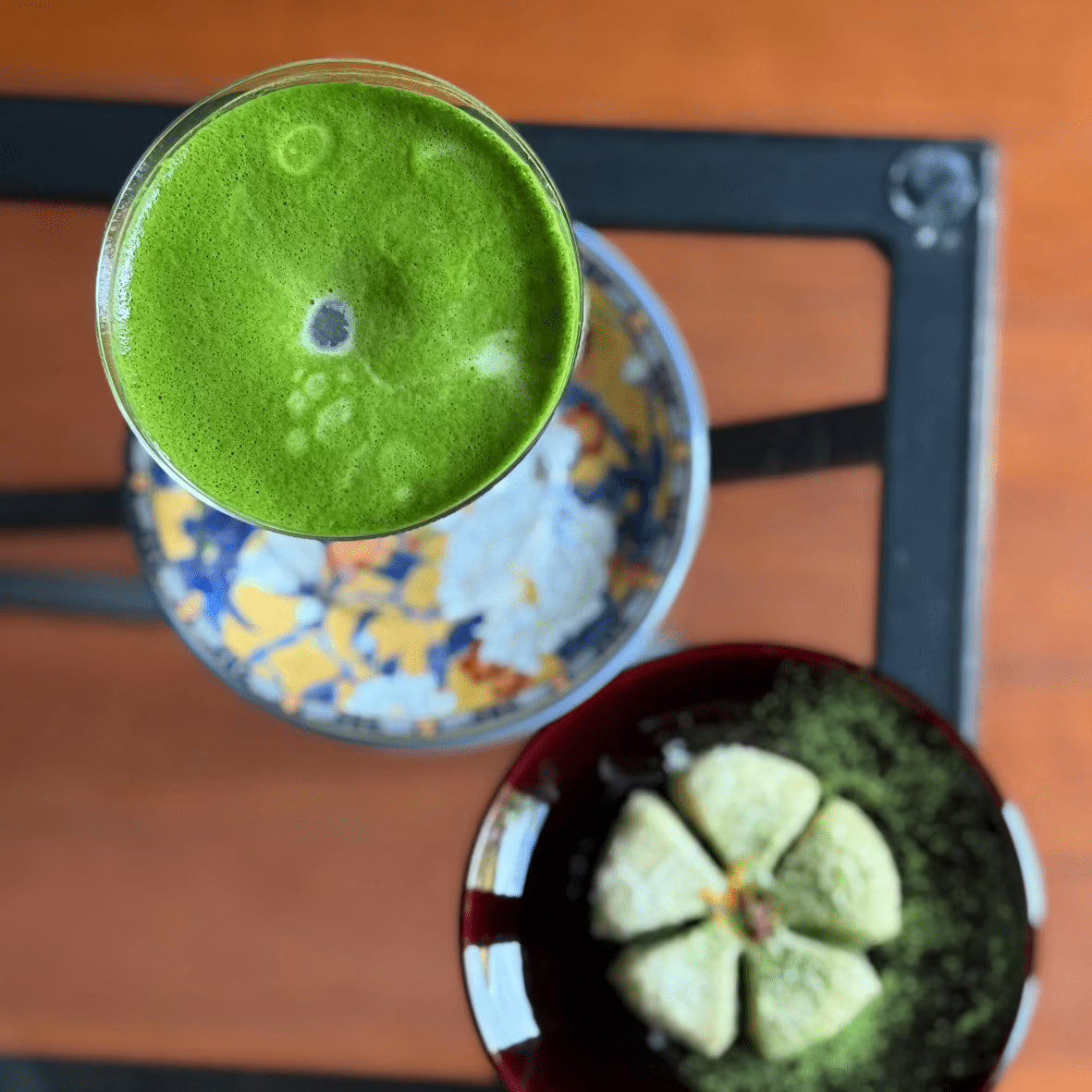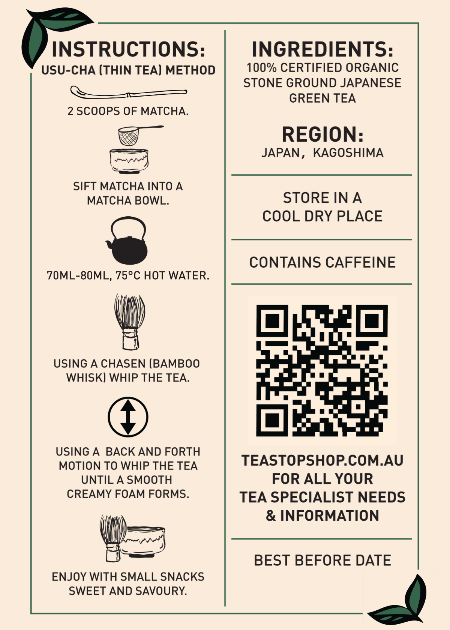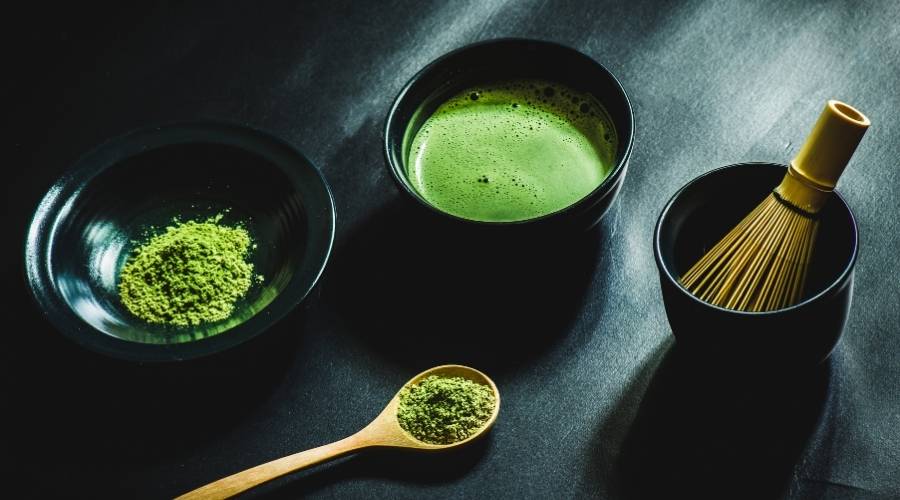
Matcha Bowl 101: What It Is and Why It Matters in Tea Ceremony
Share
Matcha is a finely ground powder made from specially grown and processed green tea leaves. It holds a significant place in Japanese culture. Known for its vibrant color, distinct flavor, and numerous health benefits, matcha is more than just a drink; it is an essential part of traditional Japanese tea ceremonies that promote mindfulness and tranquility.
In these ceremonies, a matcha bowl, or chawan, is used as a special tool for preparing and drinking matcha. The design of the chawan is carefully crafted to enhance the experience of whisking and savoring matcha. Every detail, from its size and shape to the material it is made from, is thoughtfully considered to ensure both functionality and visual pleasure.
This article explores the significance of the matcha bowl in tea ceremonies. We will discuss what makes the chawan unique, its historical and cultural importance, and why selecting the right matcha bowl can enhance your tea ritual. Whether you're new to matcha or seeking a deeper understanding, this guide offers valuable insights into the artistry and tradition behind the chawan.

Understanding the Matcha Bowl: A Key Element in Japanese Tea Culture
A matcha bowl—chawan (茶碗)—is at the heart of Japanese tea practice. The term chawan translates simply to “tea bowl,” yet its meaning runs much deeper within the context of tea utensils and ritual. Rooted in Chinese origins, where ceramic bowls were first used for powdered teas, the chawan has evolved through centuries to meet the unique needs of Japanese matcha preparation.
Matcha Bowl Definition & Purpose
The chawan serves as both vessel and tool. Its broad, open shape is engineered for whisking fine matcha powder with hot water using a bamboo whisk (chasen). This design encourages aeration, resulting in a smooth, frothy texture that accentuates matcha’s natural flavors and aroma. Cradling the bowl with both hands invites a tactile mindfulness into every sip.
Materials: Clay & Ceramic
Traditional chawans are crafted from natural materials such as:
- Clay: Earthenware bowls offer warmth and subtle variations in texture, each piece bearing the mark of its maker.
- Ceramic: Durable and versatile, ceramic chawans can be finished with a variety of glazes—sometimes glossy, sometimes matte—to enhance both beauty and function.
Potters often source local clays and practice time-honored firing methods, creating a direct connection between land, craftsperson, and tea drinker.
Shapes and Sizes for Whisking
Chawans come in diverse shapes, tailored to seasonality and technique:
- Wide-brimmed: Ideal for summer or for beginners learning to whisk vigorously.
- Deep and narrow: Retains heat longer during cooler months.
- Subtle footed base: Provides stability on tatami or outdoor surfaces.
Capacity typically ranges from 300–500ml—large enough to allow free movement of the whisk without spilling, yet intimate enough for personal enjoyment.
The thoughtful construction of the chawan supports both practical function and mindful presence, setting the stage for artistry explored in each cup.
The Craftsmanship Behind Matcha Bowls: Design, Techniques, and Cultural Importance
The design of a matcha bowl—its shape, color, weight, and feel—serves both as a functional tool and a form of artistic expression. The design of matcha bowls is deeply rooted in centuries of tradition, with each bowl reflecting the skill and spirit of its creator.
Traditional vs. Modern Designs
Traditional chawan often embraces subtlety and restraint. Their forms are guided by function: wide enough for whisking, sturdy enough to cradle in both hands.
Modern interpretations may experiment with new colors, shapes, or even simple lines while honoring the essential proportions that make whisking matcha a mindful ritual.
Both approaches pay homage to the Japanese appreciation for seasonal changes; bowls might be lighter and taller for summer, or heavier and rounder for winter.
Glaze, Texture, and Patterns
The tactile experience is central. A chawan’s glaze might feel smooth like river stones or rough like unglazed earth.
Subtle patterns—perhaps a ripple reminiscent of water or speckles from iron-rich clay—are not just decorative but invite contemplation.
Glazing techniques such as shino, oribe, or natural ash create organic variations unique to each bowl.
Wabi-Sabi Aesthetics: Simplicity, Naturalness, Imperfection
True beauty in Japanese ceramic tea bowls lies in their embrace of imperfection. Chips in the rim, uneven surfaces, or spontaneous drips of glaze are not flaws but features.
This philosophy—wabi-sabi—celebrates transience and authenticity. Each mark tells a story of process rather than polish.
Holding such a bowl encourages presence: noticing the warmth through your palms, the irregularities under your fingers.
Influences from Chinese (Karamono) and Korean (Kōraimono) Pottery
Early Japanese chawan drew inspiration from imported Chinese wares (karamono), prized for their elegant forms and refined clay bodies.
Korean bowls (kōraimono), especially rustic Ido ware used by 16th-century tea masters, introduced a humble roughness—a quality now synonymous with Japanese tea culture’s soulful aesthetic.
These influences persist in today’s studio ceramics: artists explore lineage while creating something unmistakably their own.
A true chawan does not simply hold matcha; it holds history, artistry, and the quiet wisdom of nature shaped by human hands.

The Chawan’s Role in Japanese Tea Ceremonies: Rituals, History, and Everyday Use
The chawan is a central element in the intricate dance of Japanese tea ceremonies, known as sadō or chadō. These ceremonies are not merely about drinking tea but are profound rituals that embody mindfulness, respect, and aesthetic appreciation.
Ritualized Use in Tea Ceremonies
In traditional tea ceremonies, the chawan is revered for its role in the ceremonial preparation of matcha. The host meticulously prepares the tea, ensuring every movement is deliberate and graceful. The interaction between the host and guest involves admiration and respectful handling of the bowl, creating a shared moment of calm and connection.
Preheating Techniques
Preheating the chawan is crucial to maintaining the proper tea temperature. Before adding matcha powder and water, warm water is swirled inside the bowl. This step not only helps achieve optimal brewing conditions but also prepares the bowl for its ceremonial use.
Preparation Styles: Koicha vs. Usucha
Matcha can be prepared in two main styles using the chawan:
- Thick (Koicha): A concentrated form of matcha with a rich flavor, often used in formal tea ceremonies.
- Thin (Usucha): A lighter and frothier version suitable for less formal gatherings.
Each style requires specific whisking techniques to achieve the desired consistency and taste.
Historical Context and Sen no Rikyū's Influence
The introduction of powdered green tea to Japan by Buddhist monks in the 12th century marked the beginning of matcha's cultural journey. By the 16th century, Sen no Rikyū popularized rustic ceramic bowls that aligned with wabi-sabi aesthetics, embracing simplicity, naturalness, and imperfection. His influence shaped the evolution of tea ceremony tools, emphasizing humble beauty over ostentation.
Diverse Styles Across Different Schools
Various schools of the tea ceremony have preserved diverse chawan styles. Each school has unique preferences for bowl shapes, sizes, and designs reflecting their distinct philosophies. This diversity highlights how deeply intertwined the chawan is with cultural expressions within Japanese tea traditions.
Use Outside Formal Settings
Beyond formal settings like chashitsu (tea rooms), matcha bowls are also used in outdoor noh ceremonies. These casual gatherings bring tea rituals into nature, allowing participants to experience serenity amidst beautiful landscapes. Here, too, the chawan plays a pivotal role in connecting people with their surroundings through mindful tea preparation.
Understanding these aspects underscores why a chawan is not just a vessel but a significant part of Japanese culture that enhances both ritualistic practices and everyday enjoyment of matcha.
Choosing Your First Matcha Bowl: Tips for Beginners & Brewing Tips
Selecting your first matcha bowl, or chawan, is an exciting step into the world of Japanese tea rituals. Here are key factors to consider:
Factors to Consider When Selecting a Beginner-Friendly Chawan
- Size: A good beginner chawan should be large enough to allow for proper whisking and mixing of matcha powder with water. Look for bowls with a diameter of around 12-15 cm.
- Material: Chawans are typically made from clay or ceramic, each offering unique benefits. Clay bowls retain heat well, while ceramic bowls often feature beautiful glazes and textures.
- Weight: Lightweight bowls are easier to handle and whisk matcha in, especially for beginners who may not be accustomed to the motion yet.
Importance of Pairing with Appropriate Accessories
A matcha bowl is part of a larger set that includes essential tools like the chasen (whisk) and chashaku (scoop). These accessories enhance the preparation and enjoyment of matcha:
- Chasen: Made from bamboo, this whisk helps create a smooth and frothy texture. It’s crucial for achieving the desired consistency.
- Chashaku: This bamboo scoop measures the perfect amount of matcha powder, ensuring balanced flavor.
Ideal Water Temperatures for Brewing Green Teas, Including Matcha
To brew matcha at its best:
- Maintain water temperatures between 70–80°C (158–176°F). Too hot, and the delicate flavors may become bitter; too cold, and the powder won't dissolve properly.
Proper Whisking Methods Inside the Bowl
Creating a smooth frothiness requires technique:
- Preheat Your Chawan: Pour hot water into the bowl, then discard it before adding matcha. This warms the bowl and prepares it for whisking.
- Add Matcha Powder: Use the chashaku to scoop about 1-2 grams of matcha into the bowl.
- Add Water: Pour heated water (70–80°C) over the powder.
- Whisking: Using the chasen, whisk briskly in a zig-zag motion until you achieve a creamy froth on top.
Taking these steps ensures that your first experience with matcha is both authentic and enjoyable. Embracing these mindful practices deepens your connection to this ancient tradition.
Conclusion
The matcha bowl—chawan—is an essential part of every mindful matcha ritual. Its wide shape and natural look do more than just serve a purpose; they create a moment of peace and a physical link to centuries of tradition. Whether you're whisking premium organic matcha from Australia or enjoying the delicate scent of a freshly made bowl, the chawan becomes both container and friend in the ceremony.
Choosing to buy a chawan online for your tea practice supports not just your daily calm but also honors a living heritage. Every bowl, every sip, is an invitation to pause, rooted in mindfulness, respect, and authentic connection with nature’s gifts.

